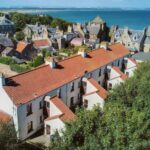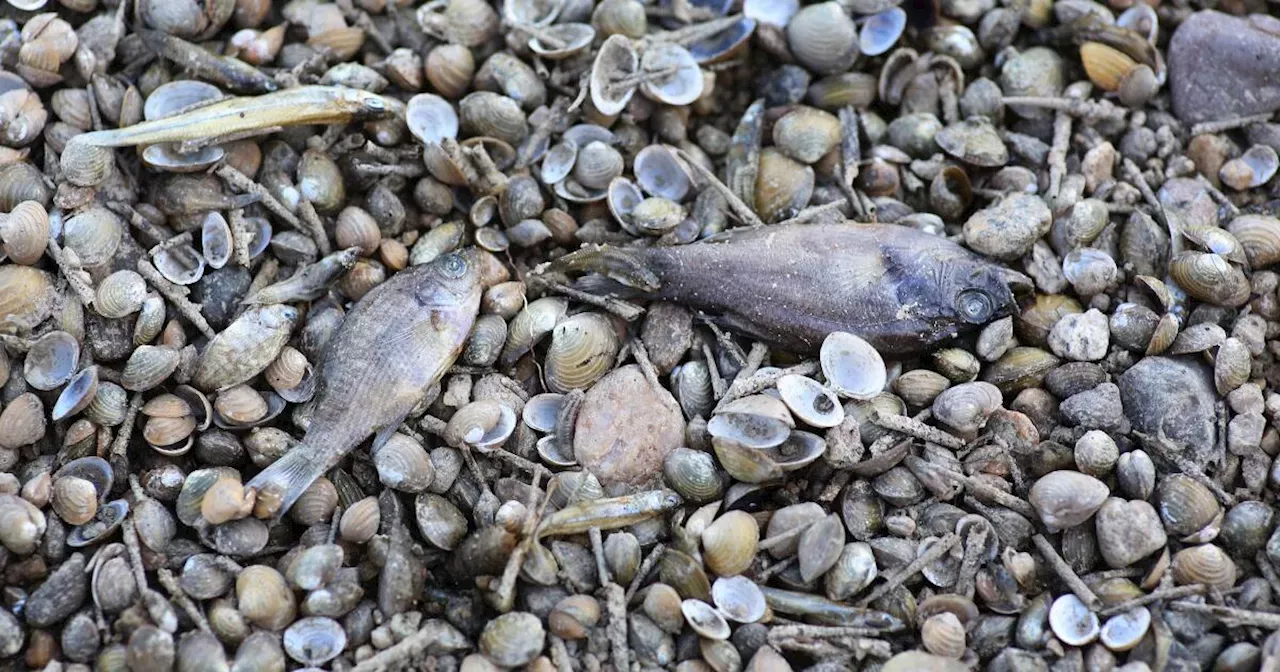A remarkable marble floor in the submerged city of Baiae—dubbed the "Las Vegas" of ancient Rome—has been revealed. The Archaeological Park of the Phlegraean Fields posted underwater images of the multicolored floor to its , noting that experts were in the process of restoring the find. The floor is an example of "opus sectile"—a type of mosaic work consisting of materials (such as marble, pearl and glass) that were cut and inlaid to form images or patterns.
The pieces used to create opus sectile works are much larger than the ones found in tessellated mosaics and often were shaped to define large parts of the design. By contrast, the designs of tessellated mosaics consist of numerous, smaller pieces that are generally uniform in size. The opus sectile work in Baia once served as the floor of the reception room of a Roman villa—a type of high-status dwelling—in the city, according to the archaeological park.

located on the shore of the Gulf of Pozzuoli, in what is now southern Italy, that served as a playground for the elite in its heyday. A fashionable coastal resort, Rome's rich and powerful built luxurious villas at the site—including the rulers Julius Caesar, Nero, and Hadrian—attracted by its beautiful setting and healing natural hot springs, not to mention its reputation for hedonism. Seneca, the famous Roman stoic philosopher, wrote in a letter after visiting Baiae that the city had become a resort of "vice" while bemoaning that it was a "place to be avoided.
" "Though it has certain natural advantages, luxury has claimed it for her own exclusive resort...
To witness persons wandering drunk along the beach, the riotous reveling of sailing parties, the lakes a-din with choral song, and all the other ways in which luxury, when it is, so to speak, released from the restraints of law not merely sins, but blazons its sins abroad—why must I witness all this?" Seneca wrote. But Baiae's party eventually came to an end thanks to geological processes. The Gulf of Pozzuoli—which itself forms the western part of the much larger Gulf of Naples—lies in the caldera of a super-volcano known as the Phlegraean Fields, or Campi Flegrei in Italian.
Volcanic activity in this region, such as the movement of magma in subterranean chambers, resulted in the submersion of the lower parts of Baiae over time, as well as other ancient coastal sites dotted along the edge of the Gulf of Pozzuoli. 🔵🟣🔴 Migliaia di lastrine di marmo, centinaia di forme diverse, riunite per creare una articolatissima geometria 📐🌊 Siamo nel Parco sommerso di Baia e questo pavimento marmoreo è stato al centro..
. The submerged parts of Baiae are now protected as part of a vast underwater archaeological park, which contains numerous statues, villas and beautifully preserved Roman mosaics, among other remains. The opus sectile work currently undergoing restoration is composed of thousands of marble slabs, in hundreds of different shapes, creating a complex design.
The work, which extends across an area of roughly 2,700 square feet, is thought to have been constructed towards the end of the Roman Empire, shortly before geological processes caused the ground to sink to the bottom of the sea. The underwater restoration work has been a "very complicated" challenge due to the "extreme fragmentation" of the remains and the large size of the floor, according to the post. Newsweek is committed to challenging conventional wisdom and finding connections in the search for common ground.
Newsweek is committed to challenging conventional wisdom and finding connections in the search for common ground..



















